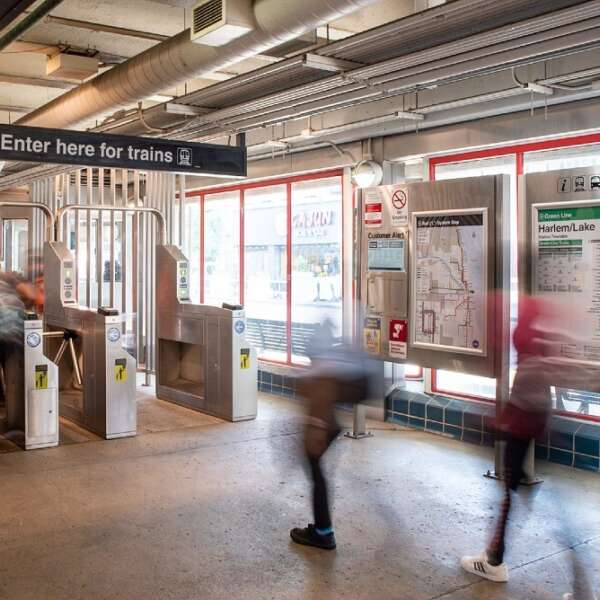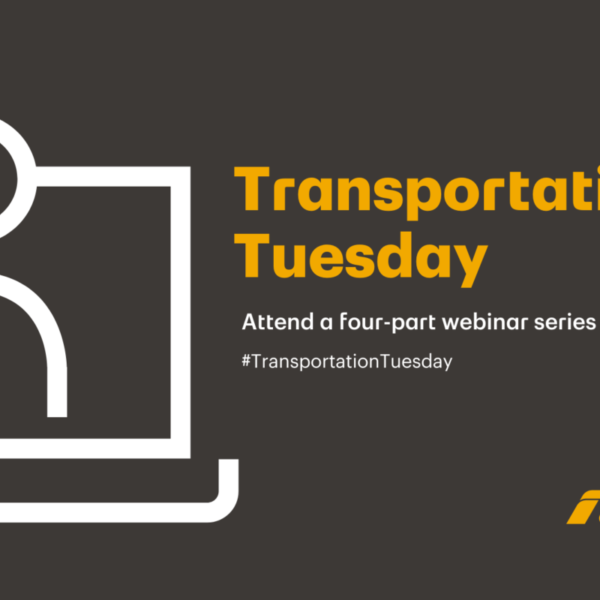2025 Regional transit budget available for public comment, foreshadows risk to system’s future without fiscal cliff solution
November 15, 2024
November 15, 2024

The RTA has released the 2025 Regional Transit Operating Budget and Five-Year Capital Program for download and public comment. The budget comes as an operating fiscal cliff threatens our region’s transit system and puts momentum of a growing system at risk.
The document details $4.147 billion in operating expenses for northeastern Illinois’ transit system, and a 2025-2029 Regional Capital Program of $9.469 billion, a significant increase from previous capital programs, in large part due to funds for the Red Line Extension being programmed.
How to comment
Download the budget and submit a public comment on the RTA’s budget webpage: https://www.rtachicago.org/transit-funding/2025-regional-transit-budget. The budget is open for public comment from November 15 through December 10, 2024. Public comments may also be submitted by emailing communications@rtachicago.org. The RTA will also hold a virtual public hearing on the budget from 4:00 p.m. to 6:00 p.m. on Tuesday, December 3. Register for the public hearing here. The RTA Board of Directors will vote on the budget at its meeting at 9:00 a.m. on Thursday, December 19.
Last regional transit budget before system faces fiscal cliff
Federal relief dollars distributed since 2020 continue to support transit operations for the upcoming budget year, making up about 20 percent of the budget. But looking ahead, 2026 will be a critical pivot point when nearly all COVID relief money will be spent, and the region will face a choice. Absent sustainable funding for transit operations, the system falls off the fiscal cliff, dramatic service cuts lead to immediate drops in ridership, making the budget gap larger and harder to solve. Or we invest in our region, securing sustainable funding and ridership grows with more service on the street.
The budget gap, which equals 20 percent of the region’s operations budget, translates to a 40 percent cut in service across all operators, which would be devastating for the region and would set off a downward spiral that would be nearly impossible to escape. On the other hand, increasing annual operating funding by at least $1.5 billion a year from current levels allows the transit agencies to expand and improve service -- for example, expanding Pace Pulse, increasing frequency across Metra lines, and overhauling CTA’s bus service to work better for riders.
Despite the funding challenges, the region’s transit system continues to recover ridership, improve safety and security, and deliver transit options riders need. The system provides more than 1.2 million rides per day, with special events and off-peak trips outpacing pre-pandemic ridership numbers. Each agency has seen double-digit year-over-year growth, thanks to service expansions that would not have been possible without federal COVID relief dollars. In places where more service was added, riders have returned.
For example, CTA bus routes that have added service have seen a 21 percent increase in ridership, compared with a 14 percent rise on routes without added service. Metra has expanded midday and weekend service on every line in the last year. Their new simpler and easier to understand fare structure has resulted in record monthly pass sales. Pace’s weekend ridership has increased approximately 30 percent over 2023 levels, driven by the faster, more frequent Pulse service. ADA Paratransit ridership is higher now than pre-pandemic.
This momentum is at risk, however, if the state does not find a funding solution to the system’s fiscal cliff.
A future without a funding solution would mean a bus rider in the city will see current 15-minute headways become 25 minutes. In the suburbs 45 minutes turns into over an hour wait for a bus. A Metra line that previously ran 90 trains per day is down to 54. However, with funding of $1.5 billion annually, the picture is much better. The Service Boards could achieve 10-minute headways on urban bus, 30 minutes in the suburbs. A Metra line carrying 90 trains can expand to over 120, working to achieve the frequent all-day service Metra is envisioning. A $1.5 billion investment in transit would echo throughout the region, growing our GDP by $2.7 billion annually, adding 28,000 jobs, and taking 290 million miles of vehicle travel off our roads in just the first year.
Chicago ranks fifth worldwide for worst congestion and a 40 percent reduction in service would add 366 million vehicle miles to our already congested roads and cost the region $50 million a year in lost productivity. But importantly, it hurts our residents, costing them more than $1,600 a year and taking away precious time they could be spending with their families or just not sitting in traffic.
It’s important to understand that going off the fiscal cliff is just the beginning of a negative feedback cycle. Less service will lead to lower ridership, which results in lower revenues and more cuts in service as budget gaps grow and become harder and harder to solve.
The greatest risk we face right now is inaction. The State must act in the first half of 2025 to secure the future of the Chicago region’s transit system. If Illinois does not act by spring 2025, CTA, Metra and Pace will be forced to shift their focus from improvements and expansion to prepare for drastic service cuts and fare increases to balance their budgets.
If a funding solution comes later than spring of 2025, in the time it would take to re-hire operators and lure back riders, fare revenue will have fallen so far as to require even more funding from the State, sending the agencies into another cycle of uncertainty, scarcity, and potentially even more service cuts and fare increases.
It’s also important to keep in mind that it takes time for tax revenue to get to the Service Boards and fund bus and train operations. Today, RTA sales tax revenue takes at least 3 months to make it to the Service Boards. Any increased taxes could take months from consumer to distribution to transit agencies, and a new tax would likely take longer. The RTA Act does not allow for the short-term borrowing at the levels needed to delay cuts and layoffs.
Influx of capital funding helps achieve regional goals, but need operational funds to support
The 2025 budget also details the 2025-2029 Regional Capital Program of $9.469 billion, which is $3.5 billion larger than the 2024-2028 Capital Program, in large part due to funds for the Red Line Extension. Major investment from state and federal legislation has been a good first step, but the unmet need remains great. The 10-year regional capital funding need for all the priority projects in this budget totals $42.7 billion, but the vast majority of that need (more than 75 percent) remains unfunded.
This budget continues to implement the RTA Regional Transit Strategic Plan, Transit is the Answer, which was adopted in February 2023. That plan set a vision of safe, reliable, accessible public transportation that connects people to opportunity, advances equity, and combats climate change. That vision and the plan’s principles of Equity, Stewardship, and Commitment to Change, guide this budget and the work of the regional transit system going forward.
The 2025 budget will continue to make great strides toward achieving the goals of the plan. For example, on the action item to “Accelerate the transition to a zero-emission regional transit system and prioritize communities burdened by poor air quality,” 82% of Pace’s 2025-2029 Capital Program will be used to replace diesel buses with electric buses. Between CTA and Pace, the regional capital program funds the purchase of nearly 300 electric buses. Major projects like the Red Line Extension will advance equity and ongoing work between the Service Boards and help to ensure the transit system is connecting people to opportunity.
The funds and years of work put in to make progress on the capital side will be wasted however without an investment in transit operations to keep the buses and trains running at the frequency riders need.
“In 2025, the region faces a critical decision for the future. Inaction will doom the Chicago region’s transit system to fall off the fiscal cliff and face cuts that make the system worse, or we can work together to achieve investment at levels that will unlock the region’s potential and meet our shared goals on equity, climate change, and rider experience,” said Executive Director Leanne Redden. “The RTA and Service Boards stand together in advocating for the increased funding the system needs to continue to provide reliable, seamless, and affordable transit service for all.”
Subscribe to our Newsletter
Related Articles
 Why fully funding paratransit service and reduced fare programs is key to closing the transit budget gap
Why fully funding paratransit service and reduced fare programs is key to closing the transit budget gap
With transit facing a fiscal cliff in 2026, fully funding critical programs like ADA paratransit service and free and reduced fare programs is one key to clo...
February 18, 2025 New stations on CTA Green Line, Metra UP-N line increase transit access for residents, riders
New stations on CTA Green Line, Metra UP-N line increase transit access for residents, riders
In 2024, CTA and Metra opened two new stations: the Damen station in Chicago’s Near West Side neighborhood along CTA’s Green Line and the Peterson/Ridge stat...
January 28, 2025 2025 Regional transit budget available for public comment, foreshadows risk to system’s future without fiscal cliff solution
2025 Regional transit budget available for public comment, foreshadows risk to system’s future without fiscal cliff solution
The RTA has released the 2025 Regional Transit Operating Budget and Five-Year Capital Program for download and public comment. The budget comes as an operati...
November 15, 2024 With equity at the forefront, CTA, Metra, and Pace open new facilities, prioritize upgrades in south and west communities
With equity at the forefront, CTA, Metra, and Pace open new facilities, prioritize upgrades in south and west communities
This year, CTA and Pace have opened or advanced various new facilities in south and west communities throughout the region, and Metra has prioritized upgrade...
October 9, 2024 New project management oversight report highlights more than 100 projects representing $8.2 billion in capital investments
New project management oversight report highlights more than 100 projects representing $8.2 billion in capital investments
The RTA’s Project Management Oversight (PMO) program ensures that the Service Boards—CTA, Metra, and Pace—are spending capital funds and managing their infra...
June 27, 2024 Transportation Tuesday recap: Improving and expanding the transit system strategically
Transportation Tuesday recap: Improving and expanding the transit system strategically
With last year’s adoption of Transit is the Answer came 15 new evaluation metrics that comprise a strategy for evaluating and selecting capital projects. Now...
May 30, 2024